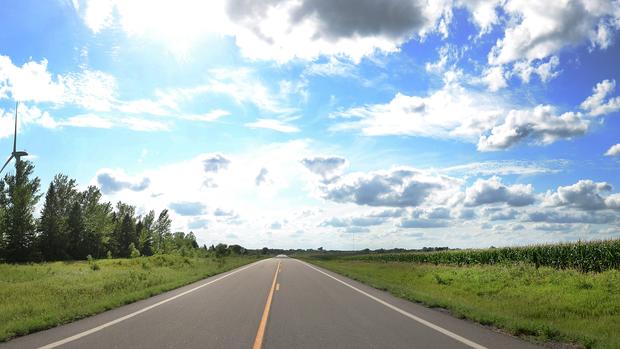WILLMAR—After months of study, discussion and input from the public, the Kandiyohi County Board of Commissioners voted 4-1 Tuesday to proceed with a local option sales tax to fund designated transportation projects.
The tax will generate an estimated $2.7 million a year that will be used to pay for four projects totaling $13 million over four and a half years.
Consumers will start to see the half-cent local tax when it takes effect April 1 of next year.
The County Commissioners said Tuesday that if Kandiyohi County wants to keep up with the needs of its highway system, doing nothing is not an option.
Compared to the prospect of increasing property taxes or issuing bonds, “the sales tax seems to be the least onerous,” said Rollie Nissen.
“It was very important for us to have the right answers here and I believe we have them,” said Jim Butterfield.
Commissioner Steve Ahmann cast the single dissenting vote. Butterfield, Nissen, Harlan Madsen and board chairman Roger Imdieke all voted in favor of the tax, which will sunset when the four projects are completed and paid for.
With the board’s action Tuesday, Kandiyohi County joins more than 30 other Minnesota counties that have decided to use a local option sales tax to help fund specific highway projects. The Minnesota Legislature has allowed this tool for counties since 2013.
The County Commissioners received some negative feedback as their discussion unfolded over the past several months. But most of the comments from the public were positive. At two public hearings earlier this month on the issue, all but one of the citizens who testified said they supported the sales tax.
Ahmann, the only commissioner to vote Tuesday against the proposed tax, said he recognized the importance of investing in the county highway system. “I understand the needs,” he said.
But he raised the same concern that he has voiced during previous debates on the issue: the financial impact on the consumer.
Ahmann made a new suggestion Tuesday to reduce the county wheelage tax, which has been in effect since 2014, by 50 percent. The $10 tax on vehicles raises about $400,000 a year that’s earmarked for projects involving gravel roads and jurisdictional realignments, two areas that lack other sources of dedicated funding.
Ahmann said he hears more complaints from his constituents about the wheelage tax than about the local option sales tax.
“What I’m trying to do here is make this a little more palatable,” he said.
A motion by him to cut the wheelage tax in half for next year failed on a 4-1 vote, however, with Ahmann the only one in favor of the measure.
County officials pointed out Tuesday that it was too late in any case to do something about the wheelage tax. Counties had a deadline of Oct. 1 to notify the state if they were making a change in their wheelage tax for 2018, and Kandiyohi County had already decided this fall to leave the tax the same.
The process of evaluating the local option sales tax, weighing the pros and cons and identifying the projects designated to receive the money may have moved slowly but it was important for Kandiyohi County to have a vision, Imdieke said.
“I think it was because we really wanted to vet the issue,” he said.
Imdieke publicly thanked his fellow commissioners, county staff and the public for “helping us get this right.”
The four projects designated for the sales tax revenue are:
- Five miles of County Road 40 west of New London to increase safety and improve the driving surface.
- Three miles of County Road 44 east of Blomkest to bring the segment up to 10-ton capacity.
- An overpass on County Road 55 at the south end of the railroad bypass corridor west of Willmar, facilitating traffic movement through the corridor and promoting access to Willmar’s industrial park.
- Reconfiguration of the County Road 40 intersection on the east edge of New London. This project dovetails with efforts by the Minnesota Department of Transportation to improve safety and traffic flow at the junction of Minnesota Highway 23 and Highway 9.
All four meet the criteria of improving safety, promoting economic development or meshing with key projects being undertaken by other partners.
West Central Tribune by Anne Polta

